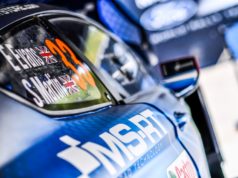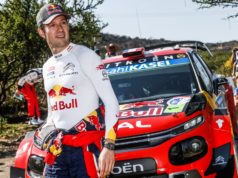David Armstrong heads up M-Sport’s Turbo department and took time out of his busy schedule to tell the team’s press office a bit about his background as well as explaining exactly how a turbo works.
How long have you been with M-Sport and what made you join the company?
I have a degree in Business Studies and had a job elsewhere working on CAD drawings. I was basically doing a lot of admin in an engineering environment but wanted to get involved in the more hands-on aspect of engineering.
Then twelve years ago I saw a job at M-Sport and went for it. I was very fortunate to get a week’s trial in the turbo department and was back there full-time the following Monday – since then, I’ve never looked back.
What does your role in the Turbo Department involve?
All of the engines are rebuilt downstairs in the engine shop. But there are various components that will be mated with the engine when it’s put into the car. And that’s what we look after. We basically look after everything around the engine.
The turbo is one of those components, and to control that we have the waste gate and a fresh air valve which in turn are controlled by the boost valves. They all get rebuilt here and we also clean, test and measure the flow rates of the fuel injectors.
How does a Turbo work?
Good question. My interest in hands-on technical work didn’t include motor cars before I came to M-Sport, so it was something that I had to get my head around pretty quickly!
In its simplest form, the turbo is essentially like a set of bellows for a fire. The compressor part of the turbo compresses the air into the engine. And the more air, the hotter and more powerful the combustion.
To drive the compressor, you have what is best described as being like a water wheel on an old mill – with the river being the exhaust gas. One side of the turbo is the driving force, using the exhaust gas. The other is the compressor, squashing the air into the engine.
In theory, it’s quite simple. There’s only really one moving part as the compressor and turbine wheels are joined together by a single shaft. But controlling it and manufacturing the components to withstand their environment is incredibly difficult and incredibly expensive!
What differentiates our turbos from a normal road car is that we use an anti-lag system. This keeps the turbo spinning at full speed all the time. If you take your foot off the throttle in a road car, it will stop burning fuel and the turbo slows down. But we want to avoid that and instead retard the ignition when the driver takes his foot off the throttle.
This means that the engine keeps running – flowing gas through the engine and keeping the turbo spinning – but crucially not producing any power. When the driver goes back on the throttle, full boost is available and there is no delay in power.
What are your hopes for Rally Poland?
We’ve got an excellent car and three awesome drivers who have all won their fair share of stages this year. There’s no reason why we shouldn’t aim high. And I wouldn’t be surprised if we got a clean-sweep of the podium at some point this year. Fingers crossed for Poland!
How to stand with confidence, a lesson from the World Champ as @SebOgier is interviewed by #WRCTV‘s @Mollysport ahead of @rajdpolski #WRC pic.twitter.com/F4Unk4T3O9
— M-Sport (@MSportLtd) June 29, 2017
































